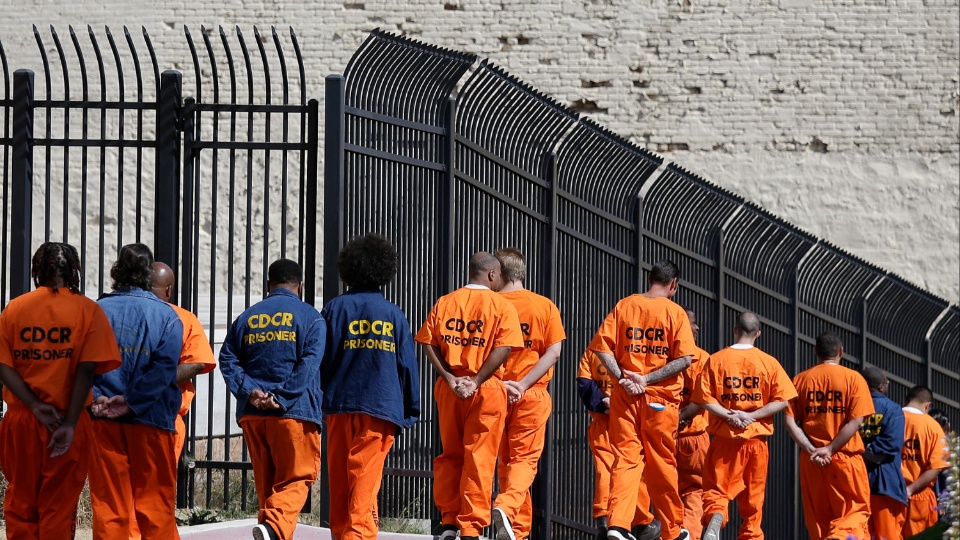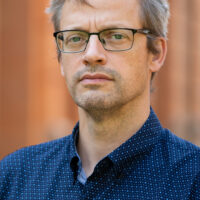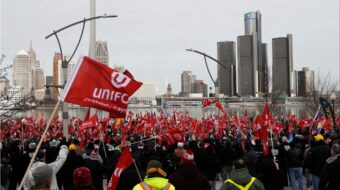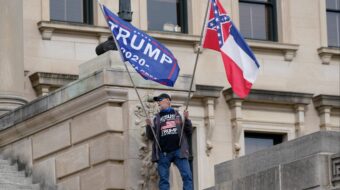
A new collection of essays and interviews by Ruth Wilson Gilmore titled Abolition Geography: Essays Towards Liberation demands the never-slackening attention of today’s readers. This book will make you angry. It should spur you to action.
In a recent viral social media post, a self-identified Euro-American woman wonders, “How do I teach my white child to fight systemic racism?” She appeared to be as much incensed by the notion that she might be complicit and frustrated that victims of racial oppression were not teaching her about how to better situate herself at some distance from that complicity to relieve herself of the burden of guilt. Gilmore’s writings are, in part, for those of us on this spectrum of engagement with the central conflict of modern U.S. society.
In an essay titled “Race, Prisons, and War,” Gilmore demystifies the continuity between racism, prisons, and state-sanctioned violence by cops and the military in the streets of this country and those of other countries. Written in 2008, that essay reminds us of the white supremacist systems that shaped the massive loss of Black life during Hurricane Katrina as well as the direct actions by armed white people—police, national guardsmen, and vigilantes—who targeted Black people during that crisis.
She reminds us how armed white police blocked Black refugees attempting to flee the floods in the aftermath of the hurricane, trapping them in lower wards of the city to suffer. The cops and their political handlers claimed they were protecting white territory from the Black invaders, suffering no consequences or enduring shame for their actions.
The consequences of systemic racism had created material conditions in which Black neighborhoods were flooded. But, Gilmore asks, “How could anybody explain officers of the law stopping, rather than helping, people in obvious danger of dying?” As if by instinct, white policemen acted with malice, violent intent, and hatred to protect a stake of ground, a geography of power that had been defined as white. They were ready to kill Black people, again and again, to do it.
It is the same instinct, racial national identification with all things white, that impelled Darren Wilson to escalate his confrontation with Michael Brown and subsequently murder him. There is no doubt that Derek Chauvin, Christopher Schurr, Kelly Goodlett, and Kyle Meany, and also the hosts of white vigilantes such as Greg and John McMichael, Kyle Rittenhouse, George Zimmerman, and Daniel Penny. Indeed, the defense of whiteness encourages even some non-white people to take up arms out of internalized beliefs about its value or their own alienated identification with the dominant cultural system.
Gilmore also reminds us that the state models action for the people. Research shows that spikes in violence occur during wars, after publicly mediatized executions, and intensified campaigns targeting other countries for potential military violence. The explosion of racist targeting of Asian people came after Trump blamed China for COVID-19 and launched a “trade war” feebly attempted to manage competition with that country. Anti-Muslim (and anti-South Asian) violence followed on the heels of U.S. government claims that “they” were targeting us because of our supposed goodness.
After the global economic crises of the 1970s and the collapse of the rate of profit for monopoly capital, new strategies for accumulation included the capitalist class’s tax revolt against the welfare state, the decentralization and offshoring of production, the intensification of public austerity (on a global scale), and deepened rate of exploitation. Whole communities in the U.S. were quickly and thoroughly decimated. Gilmore discusses the collapse of New Haven, Conn., in a process that mirrored the explosion of urban problems across the Midwest and Northeast. In the wake of this crisis, the labor movement, the primary institutional site of working-class power and its anti-racist edges, was decimated.
A new discourse about the dangers of crime and the need for a “guard duty” mentality became normalized. Gilmore writes, “Criminalization became the preferred public response to the problems created by poverty.” Prison populations swelled into the millions. Police budgets grew by tens of billions of dollars. Militarization of policing became mandated. Health care, schools, and public transportation investments vanished to feed this beast.
No remorse. No consequences for racist abuses. More than two centuries of U.S. state violence, genocide, aggressive warfare, imperialism, concentration camps, torture, invasion, poison, impoverishment, and domination. In just the era of neoliberal austerity and crime panic alone, in the last quarter of the 20th century, there occurred a “mysterious disappearance of millions of people” (187).
Most were poor, abandoned, dispossessed, people of color, workers whose lives meant nothing any longer to the capitalists. The state disappeared them into a gulag, not a fictional one, but a vast network of prisons, jails, juvenile detention centers, immigration detention centers, hospital prisons, foster care and child protective services schemes, and parole and probation schemes.
They were an easy target because they were already vulnerable. They not only lacked voting power, often denied access to the ballot box because of a variety of regulations and schemes to block access. But votes are the least of their worries. They do not own the means of production, do not control vital territory, and are riddled with debts and exorbitant costs of living, terrible housing conditions, and inadequate healthcare. They can’t bribe a politician, meet with a Senator, or attract the interest of the media other than to deepen the public image of the vulnerable as a criminal class. Seven million people have vanished.
Social death, organized abandonment, systematized premature death, and “human sacrifice” are the unstated but necessary genocidal aims of prison and policing in the U.S., Gilmore shows. Disappearance and elimination of people who are deemed obstacles to the circulation of money, capital accumulation, and realization of more capital. Removal of people on an unimaginable scale (in 1999 alone the FBI recorded 14.5 million arrests) from communities enables the intensification of exploitation.
A prison industrial complex is not just a site of enslaved labor; it is a site of generalized capital accumulation and money circulation: wages, debt, construction, vendors, guard duty, contracts, and so on. “[H]uman sacrifice,” Gilmore reveals, “is an organizing principle.” Elimination of people eases access to territory and resources that could produce new rounds of profit (gentrification). Targeting, also, those people who organize to resist.
After the 2014-2020 uprisings, the political class, fearing a generalized upending of the entire system called for “reform.” As if the ideas they outlined were new. Instead, reforms are the old pattern of combining state violence and militarization of the police with “community engagement” tactics that are straight out of counter-insurgency tactics designed by the U.S. military in its attempts to occupy foreign territories in Vietnam in the 1960s and Iraq in the 2000s. That both wars failed to achieve dominance of subjugated populations has not deterred authorities.
The approach reveals the fundamental structure of capitalist consciousness: occupation and control of working-class, impoverished, and structurally abandoned territories within the U.S. They see us as enemies. They see us as enemies who can be, if necessary, killed.
Gilmore delivers a dire picture of the backwardness of U.S. capitalism, but also hope rooted in the political and social organization of the people. She advocates a concept of “grassroots planning.” The emphasis in this model is on the organization and mobilization of the people to control territory and resources, to organize their labor and cultural activities around strategies of creative opposition to exploitation, build relationships and alliances across sectors and sites of work, community, and even nationalities.
Gilmore highlights the role of social justice unionism and the ideological work of recognizing the continuum of exploitation and oppression and imperialism. Understanding the prison and policing system enables us to see how racist oppression and worker exploitation function to try to resolve the crisis of capitalism. Our people, our class, and our communities are the victims.
Abolition Geography: Essays Towards Liberation
By Ruth Wilson Gilmore
Verso Books, 2023.
We hope you appreciated this article. At People’s World, we believe news and information should be free and accessible to all, but we need your help. Our journalism is free of corporate influence and paywalls because we are totally reader-supported. Only you, our readers and supporters, make this possible. If you enjoy reading People’s World and the stories we bring you, please support our work by donating or becoming a monthly sustainer today. Thank you!










